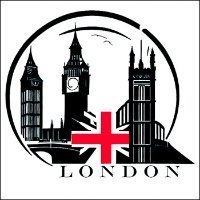Burma Allows FX Trade Between Local Banks
-
Recently Browsing 0 members
- No registered users viewing this page.
-
Topics
-
-
Popular Contributors
-
-
Latest posts...
-
0
Pattaya Robo Bog Nearly Blew Me Ringpiece Back to Blighty
Right then lads, I’ve just had an experience that’ll haunt me bog dreams for decades. Thought I’d seen it all in Pattaya, bar-tarts pulling each other's hair out, soi dogs humping scooter tires, ladyboys fightin’ over nickers, but nope, the most danger I’ve ever been in came yesterday from takin’ a quiet dump in a shopping mall. So I wander into this venue, yeah. Won’t name names, but let’s just say it’s on North Road. Place has got toilets that look like NASA mission control. Long electronic panels, lots of buttons, signs in Japanese that might as well say, “Press here to meet God.” Now me, I just needed a quick sit down job, right. Nice and simple. But curiosity kills the cat, don’t it. So I think, “Go on Lewie, live a little, try the front rinse function.” Figured my giblets wouldn't mind a cooling off. I tap one button, seat starts heatin’ up like I’m squattin’ on a George Foreman grill. Tap another, next thing I know I’m gettin’ sprayed in the ringpiece with a jet so powerful it could’ve stripped barnacles off a ship’s hull. Lads, I ain’t jokin’. It launched me forward off the seat like I’d been hit with a taser. I’m clutchin’ the sides of this robo throne, trousers round me ankles, water spray ricocheting off me undercarriage and hittin’ the cubicle door like it’s a pressure washer demo. I must’ve looked like a fat carp floppin’ about in a paddling pool. And just when I think it’s over, some other light flashes red and suddenly I’m gettin’ blow dried down there with a gust so strong me bits looked like a basset hound’s ears in a convertible. At this point I ain’t sure if I’ve been cleaned, cooked, or consecrated. Felt like I should’ve walked out the cubicle wearin’ a halo and robes. Staggered out the stall, socks soaked, hair standin’ on end, one Thai bloke lookin’ at me like I’d just lost a fistfight with the plumbing. And I’m swearin’ never again. Not sayin’ the name of the mall lads, but if you fancy a “holy water experience,” it’s the big one with all the countries for floors and the airport theme. Avoid the toilets if you value your dignity. Pattaya, yeah lads. Come for the lovin', leave baptised by bog. Take it from Lewie, stick to the old school bum guns. They might drench your shorts if you slip, but at least they don’t try to send you to the afterlife via your arseholio. -
-
-
115
-
41
Thai dating apps just escorts?
What was nasty? You look down on toilet cleaners. I’m learning nastiness from the best. Forum liberals. Why do keep initiating contact and insulting someone who is NOBODY??? -
130
Famine in Gaza as children denied nourishing food supplements
Looting occurred before March of this year: From November, 2024: Here's what happened in Gaza after biggest looting of U.N. food aid in recent memory Armed gangs attacked a convoy of more than 100 trucks of United Nations food aid, as humanitarian groups call on Israel to do more to secure aid routes and as people across Gaza go hungry. https://www.npr.org/2024/11/20/nx-s1-5195597/heres-what-happened-in-gaza-after-biggest-looting-of-u-n-food-aid-in-recent-memory Out of 109 trucks in the convoy, 98 were lost, according the report. From December, 2024 Organized Looting Throws Gaza Deeper Into Chaos Gangs are filling a power vacuum left by Israel in some parts of southern Gaza, hijacking desperately needed aid for Palestinian residents. https://www.nytimes.com/2024/12/23/world/middleeast/gaza-looting.html
-
-
Popular in The Pub


.thumb.jpg.b54783ad387f65d779e04f535fcfeee9.jpg)
.thumb.jpg.3ee24d9400fb02605ea21bc13b1bf901.jpg)





Recommended Posts
Create an account or sign in to comment
You need to be a member in order to leave a comment
Create an account
Sign up for a new account in our community. It's easy!
Register a new accountSign in
Already have an account? Sign in here.
Sign In Now